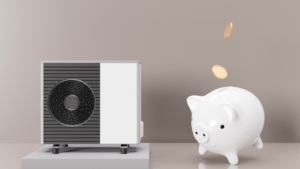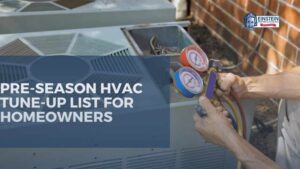Introduction:
As energy costs continue to rise, homeowners are increasingly looking for ways to reduce their energy bills while still keeping their homes comfortable. One area where significant energy savings can be achieved is in heating and cooling your home. In this blog post, we’ll explore some of the most effective ways to heat and cool your home in an energy-efficient manner.
Upgrade your insulation
Upgrading your insulation offers numerous benefits for your home and the environment. By taking this step, you can significantly improve HVAC energy efficiency, reduce your carbon footprint, and enjoy a more comfortable living space.
Insulation acts as a barrier, minimizing the exchange of heat between your home and the outside environment. In colder months, it helps to retain warm air indoors, while during hotter periods, it prevents heat from seeping into your home. This means that your heating and cooling systems won’t have to work as hard, leading to lower energy consumption and reduced utility bills.
A key area to focus on is the attic, as heat tends to rise and escape through the roof. By insulating the attic, you can prevent this heat loss and maintain a more consistent temperature throughout your home. Similarly, insulating the walls can further enhance energy efficiency by preventing heat transfer.
Installing double-pane windows offers an additional layer of insulation, reducing heat loss or gain through your windows. Additionally, sealing air leaks around windows and doors helps to eliminate drafts and maintain a stable indoor climate.
Upgrading your insulation is a wise investment that pays off in the long run. Not only does it improve energy efficiency and save you money, but it also contributes to reducing greenhouse gas emissions and conserving natural resources. So, take the initiative and upgrade your insulation to create a more sustainable and comfortable home environment.
Use a programmable thermostat
Using a programmable thermostat is a simple and effective way to enhance energy efficiency in your home. By customizing temperature settings according to your daily routine, you can optimize comfort while minimizing energy waste.
With a programmable thermostat, you have the flexibility to set different temperature levels for various times of the day. For instance, you can lower the heat or air conditioning when you’re away at work or asleep, and then program it to adjust to your preferred comfort level before you wake up or return home.
This intelligent control over your HVAC system helps to avoid unnecessary energy consumption when no one is present, resulting in significant energy savings over time. Additionally, reducing energy usage also means reducing your carbon footprint and contributing to a more sustainable environment.
By investing in a programmable thermostat, you gain convenience, comfort, and cost savings. It empowers you to effortlessly manage your home’s temperature settings while promoting energy efficiency and responsible energy consumption.
Install a high-efficiency HVAC system
Installing a high-efficiency HVAC (Heating, Ventilation, and Air Conditioning) system can have a significant impact on your energy consumption and comfort levels. By upgrading to a more efficient model, you can enjoy several benefits.
When it comes to air conditioning, look for systems with a high SEER rating. The SEER rating indicates the cooling output of the system divided by the energy it consumes. A higher SEER rating means greater energy efficiency and lower operating costs.
For heating, consider a system with a high AFUE rating. AFUE measures the efficiency of converting fuel into heat. A higher AFUE rating indicates a more efficient heating system that maximizes fuel usage and minimizes waste.
In addition, installing a heat pump can further improve energy efficiency. Heat pumps use electricity to transfer heat from one place to another, rather than generating heat themselves. This makes them highly efficient for both heating and cooling purposes.
Upgrading to a high-efficiency HVAC system can lead to significant energy savings, reduced utility bills, and a smaller carbon footprint. It’s a smart investment that enhances your home’s comfort while promoting energy conservation and environmental sustainability.
Use fans
Using fans in your home can provide a cost-effective and energy-efficient way to enhance comfort and airflow. Whether it’s a ceiling fan or a portable fan, these devices can make a noticeable difference in creating a cooler environment.
During the summer months, set your ceiling fan to rotate counter-clockwise. This direction creates a cooling breeze that helps to evaporate moisture from your skin, making you feel more comfortable. The air movement also helps to distribute cool air from your air conditioning system more effectively throughout the room.
In the winter, reverse the direction of your ceiling fan to clockwise. This will push warm air down from the ceiling, helping to distribute it evenly and prevent it from accumulating near the ceiling.
Using a portable fan in conjunction with an air conditioning unit can also be beneficial. By strategically placing the fan to blow cool air throughout your home, you can reduce the need for multiple air conditioning units in different rooms. This can result in energy savings and lower utility bills.
By incorporating fans into your home, you can improve airflow, increase comfort levels, and potentially reduce your reliance on air conditioning, leading to energy conservation and cost savings.
Install energy-efficient windows
Upgrading to energy-efficient windows is a smart investment that can have a remarkable impact on your home’s energy efficiency and comfort. By installing double-paned windows, you create an extra layer of insulation that minimizes heat transfer.
Double-paned windows consist of two glass panes with a layer of insulating gas in between. This design helps to reduce the amount of heat that enters your home during hot summers and escapes during cold winters. As a result, your heating and cooling systems don’t need to work as hard, leading to lower energy consumption and reduced utility bills.
In addition to double glazing, consider windows with low-E (low-emissivity) coatings. These coatings are designed to reflect infrared light while allowing visible light to pass through, effectively reducing heat gain from sunlight. This helps to keep your home cooler in the summer and reduces the need for excessive air conditioning.
By investing in energy-efficient windows, you can create a more comfortable living environment while saving on energy costs. These windows not only improve insulation but also contribute to reducing your carbon footprint and promoting sustainability.
Seal ductwork
Sealing the ductwork in your HVAC system is a crucial step in maximizing energy efficiency and reducing energy waste. Duct leaks can lead to significant air loss, causing your heating and cooling systems to work harder and consume more energy than necessary.
Leaky ducts can result from poor installation, aging, or damage. By sealing these leaks, you can ensure that conditioned air reaches its intended destination, whether it’s heating or cooling specific rooms in your home. This not only improves comfort but also minimizes energy loss and lowers your energy bills.
Sealing ductwork involves identifying and patching any gaps, cracks, or disconnected sections in the ducts. You can use foil tape or mastic sealant to seal the leaks effectively. It’s also a good idea to insulate ducts in unconditioned spaces, such as attics or crawlspaces, to further prevent energy loss.
By sealing your ductwork, you can improve the overall efficiency of your HVAC system, reduce energy waste, and create a more comfortable and cost-effective home environment.
Use natural ventilation
Utilizing natural ventilation is an effective and eco-friendly method to cool and freshen up your home. When weather conditions permit, opening windows and doors allows for the circulation of fresh air, creating a comfortable indoor environment without relying on air conditioning.
By embracing natural ventilation, you can take advantage of cool breezes and maintain a pleasant temperature within your home. This not only reduces energy consumption but also provides a connection to the outdoors, promoting a sense of well-being and harmony with nature.
Furthermore, enhancing ventilation in your attic can prevent the accumulation of heat, which can transfer to the rest of your home during hot summer months. Installing skylights or vents in the attic facilitates the escape of hot air and promotes better air circulation, helping to keep your home cooler and more comfortable.
Incorporating natural ventilation strategies into your home not only reduces energy usage and costs but also fosters a healthier living environment. It’s a sustainable approach that maximizes comfort while minimizing environmental impact.
Conclusion:
Heating and cooling your home can be a significant expense, but there are many energy-efficient ways to keep your home comfortable without breaking the bank. Upgrading your insulation, using a programmable thermostat, installing a high-efficiency HVAC system, using fans, installing energy-efficient windows, sealing ductwork, and using natural ventilation are all great ways to reduce your energy consumption.








